5 Common Sense Boat Safety Tips That Could Save a Life
Staying safe on the water takes one thing; common sense. We’ve put together five common sense boat safety tips that could save a life.
Healthy humans can produce the energy equivalent of 1.2 horsepower. Trained athletes can exceed 2.5 horsepower. However, give a human a throttle on a boat, and suddenly they control upwards of 200 horsepower or more!
We are not made to have that kind of power. A sudden growth of 100-200 times more power on a surface as unstable as water can become a tragedy. Each year hundreds of deaths and thousands of injuries occur from boating accidents across the United States. Unfortunately, no matter which Megaware products were installed to protect your investment, poor decision making can still destroy property and end lives. Luckily, we all possess the most basic and useful element to guarantee boat safety: common sense.
We’ve compiled the five easiest, most common sense boat safety tips anyone can do. You never know, it could just save a life.

Boat safety tips that are common sense:
1. Don’t drink and drive. At the most basic level, common sense prohibits the combination of alcohol and driving. Avoiding alcohol-induced impairment should be expected from every vehicle operator and boater alike, but that is not always the case. Over 15% of boating fatalities involve alcohol.
Whether you’re drinking or not, boats and vehicles can both reach excessive speeds, but the similarities end there. The absence of organizational features, such as signs and marked lanes, make travel on water more unpredictable and dangerous. Some argue that these features can provide orientation to an impaired mind on the road. We don’t agree, but also want to point out that no such features exist on the water. Traffic on the water does not follow a route, and boats can come from any direction. An environment like this demands heightened vigilance, but alcohol all but eliminates it. Don’t drink and drive. On land or water. Period.
2. Slow down. Responsible boaters should predict and avoid congested areas, but that’s sometimes impossible. Even in unpredictable circumstances, there are common sense precautions. To start, slow down. The rush of speeding to the next fishing hole or having the wind blow through your hair in itself can be intoxicating, but there lies the temptation. A lack of attention to the environment combined with high speeds and unpredictable wake by other boats are a recipe for disaster. A racing boat with 200 horsepower behind it slamming into the power of a 3-foot wave is violent and can eject riders. Running at high speeds in congested areas not only places the operator at risk, but also any onlookers or unsuspecting boaters.
3. Follow basic rules. Standard boat navigation on all bodies of water insists on driving clockwise. On lakes and reservoirs, this means cruising circularly along the shoreline. Rivers should be navigated like a highway – stay on the right side of the river channel. Being predictable allows other boaters to avoid your path. When towing a skier, use a spotter, as most state laws require. Travel around the lake clockwise, and then maintain open and constant communication between the driver and spotter. Under NO circumstances should other boaters follow in the wake of the skier.
4. Always have emergency numbers handy when planning a trip on large bodies of water. On the Great Lakes, keep not only the US Coast Guard number available, but also the Canadian Coast Guard number. Let friends or family know where you are heading, where you launch, and when to expect you back.
5. Don’t leave without your safety gear. This means life jackets for everyone on board, a kill switch, and anything specific to your area or conditions.

How not following common sense boat safety tips almost killed me:
During practice for the 2015 B.A.S.S. Northern Open on Lake Erie out of Sandusky, Ohio, my partner and I found ourselves in an unexpected storm and being bombarded by 8-foot waves. Quite literally, they came cresting on top of our bass boat. Things deteriorated rapidly. One of two bilge pumps broke and the outboard motor quit. With a boat filling up with more water than it could spit out, I took to the phone. But, my phone did not have the appropriate emergency number. We had ventured into Canadian waters, thus placing us out of US Coast Guard jurisdiction. And the location made internet surfing for a phone number unavailable.
Luckily, a 911 call put us in contact with the Canadian Coast Guard, and they dispatched a 47 foot lifeboat and helicopter, but not before a harrowing phone call to my wife. You can read the whole story in “Moments That Happen.”
I had ignored common sense. Going into a foreign country on a Great Lake, which has tremendous current and produces legendary waves without emergency contact, is the complete lack of common sense. The cost was nearly my life, which would have left my children without their father, and made my wife a widow. This was the result of being too lazy to follow common sense.
Boat safety tips from FLW Pro Bass Angler, Grae Buck:

Professional FLW Tour bass angler Grae Buck of Harleysville, Pennsylvania often finds himself on the country’s largest waters for competition and has more experience in big waves than most. Buck has earned the reputation as one of the best anglers on the 1000 Islands stretch of the St. Lawrence River. Because of its high seas, strong current, and congestion, Bassmaster Magazine ranked this waterway as the “scariest” fishery in America in 2014. His common sense approach begins before he even arrives to the ramp.
“Before I leave for the lake, I make sure I have all of my safety equipment, life jackets, and kill switch,” admitted Buck. “I also make sure all of my equipment above and below deck is secured.” This includes everything from tackle, rods, and even the trolling motor. “My trolling motor is strapped tightly, and I also use a TH Marine Troll Tamer Stabilizer Lock to eliminate any jostling or vibration.”
Buck makes it a habit to check for loose bolts and nuts over the entire boat every time he gets off the water. He stresses, “When running in 6-8 foot waves, one lose bolt can quickly lead to a lost outboard motor or worse.” In particular, he pays special attention to every connection on the motor and jack plate.
Buck on boat safety tips for big waves:
For boaters spending time on big water, big waves are inevitable. Buck’s biggest suggestion begins with common sense: Slow down! Buck urges, “Whether you are running into, with, or between waves, go at the slowest speed possible that allows you to keep your boat on plane and the nose up.” His navigational approach to waves is largely dependent on the direction of waves. “Whenever possible, it is easiest and safest to run in the troughs between waves.” If waves are coming from either the left or right of the boater, the trough between waves can be 10-20 feet wide. Even when waves are pushing 10 feet in height, these troughs can be surprisingly easy to navigate. Admittedly, GPS mapping on the boat is necessary because seeing the shore is unlikely.

When forced to face waves head on, he begins by slowing down, but also relies heavily on his Atlas Hydraulic Jack Plate. “I already mentioned going as slow as possible, and when I trim the motor all the way down with my jack plate, I can cruise at 10 M.P.H. over large waves to prevent spearing any.” He maneuvers his boat by climbing the waves in a zigzag motion at 60-degree angles. While crossing a wave, Buck turns his boat in a 60-degree angle either left or right. This prevents his boat from “falling” several feet from the peak of the wave down into the trough. “I just crawl up and over the waves until I get to where I’m going.” He adds, “It may take me awhile to get where I’m going, but when I get there my gear is still operational and my partner and I are safe.”
According to Buck, the most dangerous way to navigate large waves is when traveling the same direction as them. “When coming up from behind them, it is really easy to come over one faster than you realize and spear the front of the boat right into the next wave,” warns Buck. “Spearing” a wave is when the nose of the boat drives into the wave, perhaps three feet from the top, causing all three feet of water to crash into the boat. The easiest way to avoid this is, again, to travel as the slowest speed possible. Buck adds, “It is always important to keep the nose of the boat pointing up, but especially [in this direction].” He applies the same zigzag strategy.
The most threatening obstruction, Buck warns, is a rogue wave. “These can come out of nowhere when going through 4 and 5 foot waves.” He explains, “I am always trying to read the water 3-4 waves ahead of me, because running into one of these waves that are 5-6 feet high without warning are the ones that get you in trouble.” Because of the concentration required on each big wave, it is easy to miss these coming. Buck recommends continuing the same zigzag motion with a rogue wave, but it will require more horsepower to ride over it, “Make sure you stay in control.”
What the Coast Guard says about boat safety tips:
While the Canadian Coast Guard was towing me in 2015, the rescuers shared with me that jumping out of a sinking vessel should be done only if sinking to the bottom is certain. They had numerous stories of passengers, feeling the boat was going to sink, who jumped in. Only the boat did not sink. Essentially the passengers just jumped to their own peril. Not only does leaping out take passengers away from the only floatation device available, the cold water saps body temperatures, and they become much more difficult to locate. If the worst happens, a capsized boat, attempt to get back in the boat, or at least hold onto it.
Perhaps when it comes to common sense and boating, the most prudent act is wearing a US Coast Guard Approved personal floatation device (PFD). State laws require one for each crewmember, and anytime risks exist, don a PFD. In 2014, the US Coast Guard reported that 78% of boating deaths were from drowning. Of those victims, 84% were not wearing a PFD.
Of course, dangers persist no matter what precautions are taken. But strict adherence to our common sense boat safety tips can minimize the likelihood of encountering them. It can also guide to safety and ensure another day of fun on the water.
When you’re ready for fun on the water, it’s only common sense to protect your investment with Megaware products. You can find them all here online, or at major retailers nationwide.

ANDREW BUSS
Andrew Buss resides with his family in the great state of Indiana. When he’s not fishing, creating YouTube videos or running the R&B Bass Circuit, he poses as a school teacher. If you’d like to see more from the #hunteroffish check out his social media channels.
Did you also see?
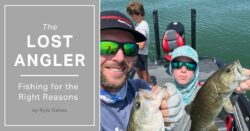
Fishing For The Right Reasons

Fishing as a Co-Angler: Benefits, Challenges, and Techniques
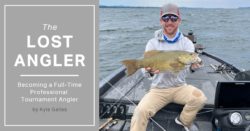

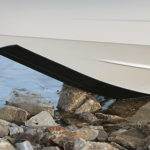
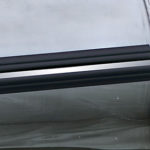
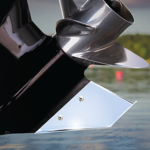

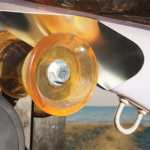
Comments